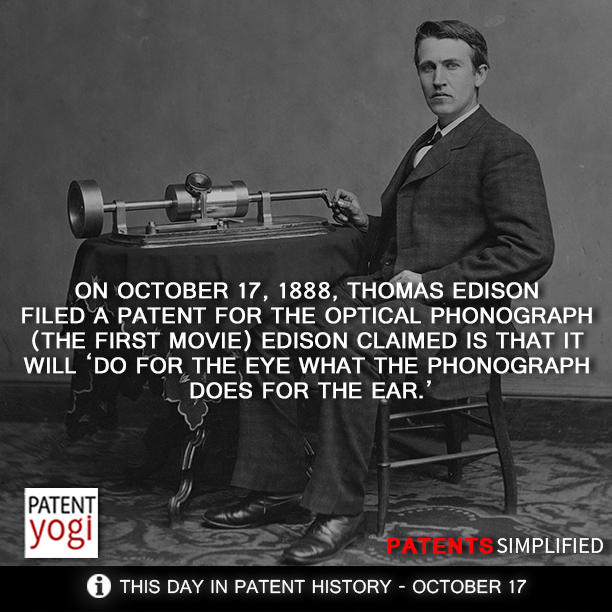On October 17, 1888, Thomas Edison filed a patent for the Optical Phonograph (the first movie). Edison claimed is that it will ‘do for the eye what the phonograph does for the ear.’
Wikipedia – “An encounter with the work and ideas of photographic pioneer Eadweard Muybridge appears to have spurred Edison to pursue the development of a motion picture system. On February 25, 1888, in Orange, New Jersey, Muybridge gave a lecture that may have included a demonstration of his zoopraxiscope, a device that projected sequential images drawn around the edge of a glass disc, producing the illusion of motion. The Edison facility was very close by, and the lecture was possibly attended by both Edison and his company’s official photographer, William Dickson. Two days later, Muybridge and Edison met at Edison’s laboratory in West Orange; Muybridge later described how he proposed a collaboration to join his device with the Edison phonograph—a combination system that would play sound and images concurrently. No such collaboration was undertaken, but in October 1888, Edison filed a preliminary claim, known as a caveat, with the U.S. Patent Office announcing his plans to create a device that would do “for the Eye what the phonograph does for the Ear”. It is clear that it was intended as part of a complete audiovisual system: “we may see & hear a whole Opera as perfectly as if actually present”. In March 1889, a second caveat was filed, in which the proposed motion picture device was given a name, Kinetoscope, derived from the Greek roots kineto- (“movement”) and scopos (“to view”).” [Source: https://en.wikipedia.org/wiki/Kinetoscope]

